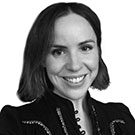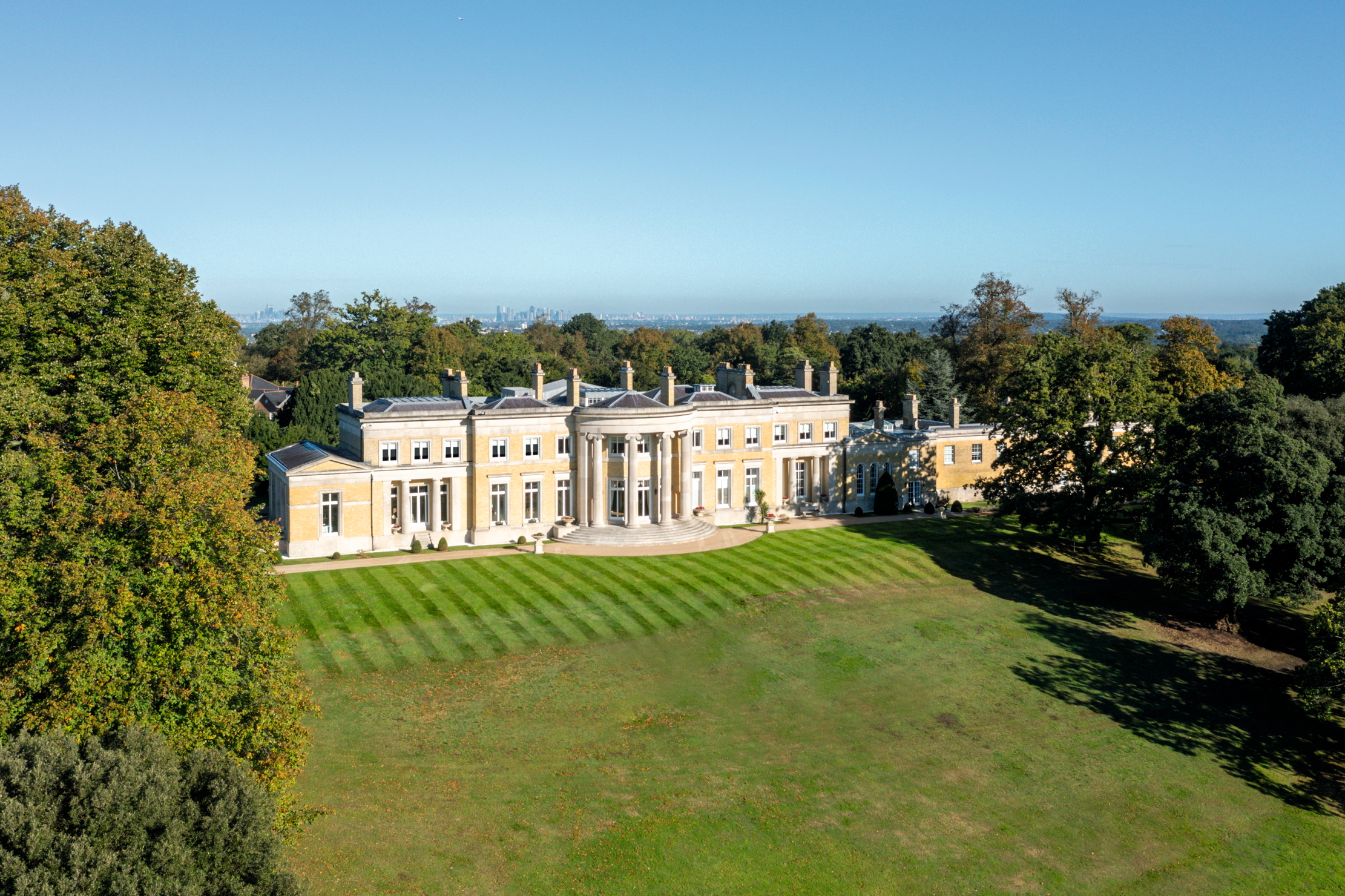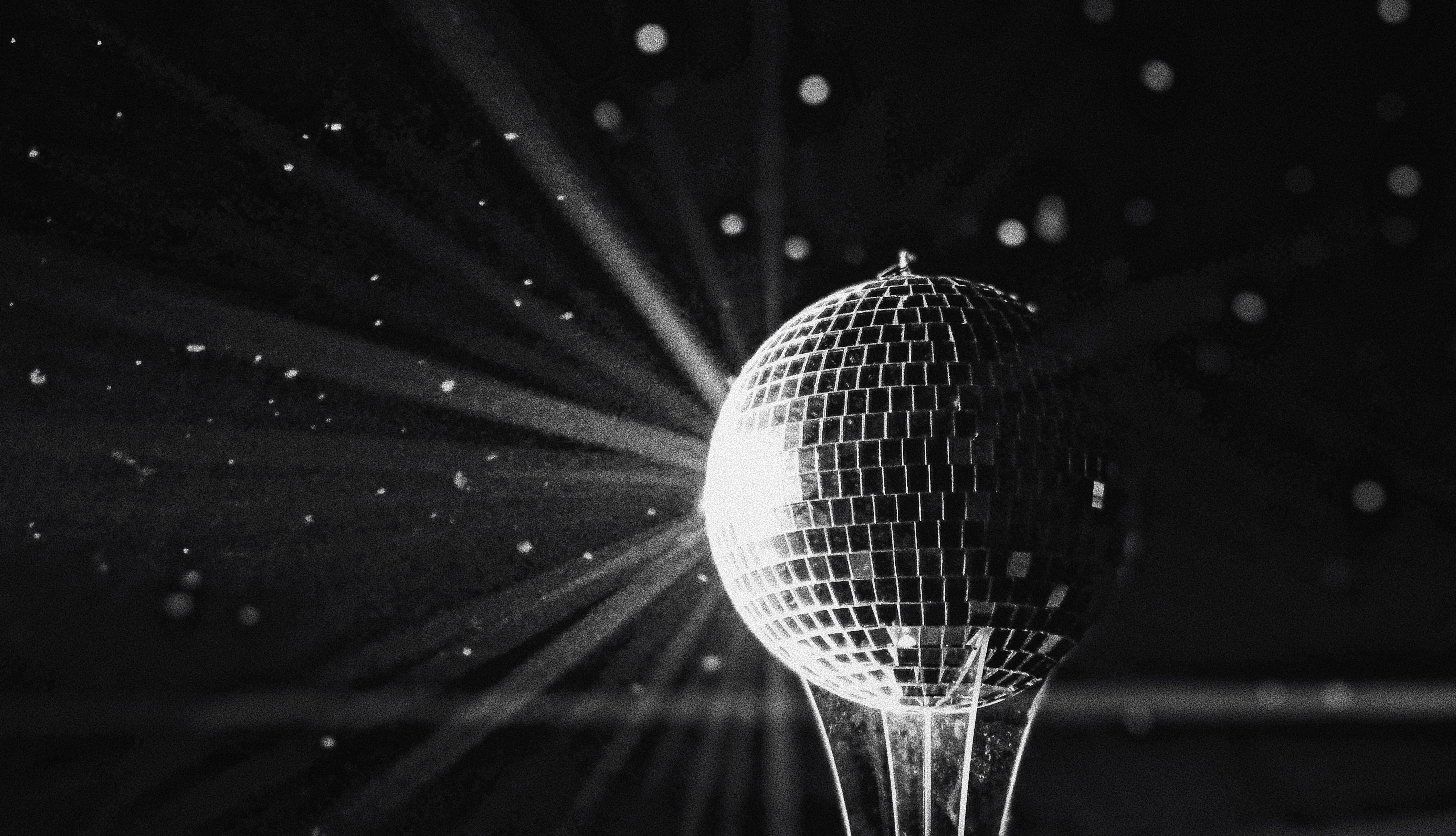The best places to commute from Warwickshire, Northamptonshire, Lincolnshire and even Yorkshire: 'Up here, you can have it all'
If you’re only in the office a few days a week, what does a little extra journey time matter? Annunciata Elwes begins a four-part series looking at how our new work patterns have redefined the concept of a commutable home.


Riding a train may not be as joyful as clicking a pair of ruby slippers, but there is a kind of magic to the new one-to-two-hour commute. But the journey itself is just the start of it: with flexible-working broadening our horizons, you may find yourself shopping for a bigger, better house, without actually spending more money. It's as if the countryside just got bigger.
Whatever mandates bosses issue about returning to the London office, one thing that the tumultuous past few years have taught us is that life is for living. We’re been forced to re-evaluate what’s really important and, for most of us, the good life does not involve spending 15 hours a week on a packed commuter train.
Flexible, hybrid, WFH, WFB or W-in-pyjama-bottoms-with-a-Zoom-worthy-shirt-on-top — whatever you want to call it, homeworking is here to stay, which means the property market has broken free from its golden-hour shackles. Where ‘under an hour from London by train’ used to be the mantra for estate agents selling old rectories, cottages and manor houses to families moving to the commutable sticks, your average partial homeworker or TWaT (the acronym for a person who comes into the office on Tuesdays, Wednesdays and Thursdays) can cheerfully manage a journey of an hour and a half or even two hours.

In this four-part series, we’ll look at the areas of the countryside that have opened up to those commuting into the capital, charming towns and villages where, for a slightly longer trip, you’ll get more house for your money and an extra spring in your step. This week, our focus is the area to the north of London, from Leamington Spa to Northampton, Grantham and even North Yorkshire.
North of the (imaginary) wall
On the Chiltern Railways line from London Marylebone, the Warwickshire town of Royal Leamington Spa, with its wide boulevards and ‘countryside feel’, has been repeatedly ranked the best or happiest place to live (Rightmove, Sunday Times and so on).
Nick Martiny Roberts, who recently moved there to head up Winkworth’s new office (which opened yesterday, May 28), can’t stop singing its praises. ‘I’m obsessed with Warwickshire,' he says.
'It’s affordable, yet well connected — London is about an hour and 10 minutes on the train, the M40 is 10 minutes away, we’re half an hour from Birmingham International Airport, an hour from Oxford and an hour and 20 from Heathrow. And it is such a beautiful place. The Regency splendour of Leamington slowly blends into the ancient Tudor architecture of Warwick, which is almost adjoining. The many schools are wonderful. It has so much going for it.’
Sign up for the Country Life Newsletter
Exquisite houses, the beauty of Nature, and how to get the most from your life, straight to your inbox.

It speaks a lot for the area that Winkworth, with its 103 countrywide branches, has chosen to open only two new sites this year — Leamington Spa and Warwick. Mr Martiny Roberts believes these areas are about to capture some well-deserved attention, and he could be right.
‘Compared with Oxfordshire or Gloucestershire, just one county away,’ he says, ‘buyers would probably save 40% or 50% on value. A four-bedroom village house here costs about £450,000/£500,000, moving up to £1.2 million or £1.5 million for an old rectory. And within Leamington Spa, a three or four-bedroom Victorian or Regency townhouse might cost between £550,000 and £1.5 million, with six beds from £900,000 to £2 million on the best roads.’ He reels off the names of picturesque villages, from Kenilworth, with its striking castle, to Barford, with its community-run village shop, Offchurch (where The Stag is one of the best pubs around), Hunningham, Stoneleigh and Charlcote, home to a famous deer park.

A little further east, Ian Denton, director of Jackson-Stops’ Northampton branch (1hr 11min to Euston), has noticed ‘a hive of activity from buyers looking for a lifestyle change. Families moving out of London are drawn to Northamptonshire for the outstanding schools, both state and private’. He cites Maidwell Hall and Spratton Hall preps, plus Oundle, Rugby and Stowe. ‘When you consider the excellent transport links — and the fact that the commercial centres of London, Birmingham, Cambridge and Oxford are all about an hour’s drive, Northamptonshire offers great value for money.’
The most desirable villages are those around the Spencer family’s Althorp estate, he adds, such as the Bringtons (Great and Little), the Harlestones (Harlestone itself, plus Lower and Upper iterations) and the Bramptons (Church and Chapel). ‘Picture postcard’ three-bedroom cottages in local ironstone range from £450,000 to £700,000, with four-bedroom houses between £700,000 and £1 million.

He continues: ‘Now standing as one of the largest towns in the country, Northampton and its surrounds offer a combination of highly coveted period and bespoke new-build properties, adjoining glorious countryside. Wild swimming and paddle boarding on the River Nene and Great Ouse, which run through the county, is increasingly popular and the grounds of Castle Ashby and Althorp are the perfect backdrop for days out.’
When not strolling along the Jurassic Way through the Welland Valley to Rockingham Castle, Strutt & Parker’s Ed Brassey sells houses in the charming villages that surround Leicestershire’s Market Harborough (1hr 20min to St Pancras) and Stamford, Lincolnshire (1hr 11min on the fastest service to King’s Cross or up to two hours), and lives just outside the latter.

Historic Market Harborough, where, currently, a breeding pair of peregrine falcons reside in the spire of St Dionysius — ‘I see them every day,’ he enthuses — was once part of Rockingham Forest, an ancient royal hunting ground, and still holds firm ties to the sport. ‘This is traditional hunting country — rolling and beautiful,’ says Mr Brassey. ‘The hedges tend to be really well looked after.’
Schools are excellent, including Leicester Grammar, Witham Hall prep, Spratton Hall, Stoneygate, Oakham, Oundle and Rugby. And the villages in these parts, which contain an awful lot of Grade II-listed houses, are extremely pretty. Medbourne (home to the much recommended Nevill Arms), Hallaton, Foxton, with its famous Locks watched over by herons, swans, swallows and kingfishers and the Langtons are ‘super popular. Some are more off the beaten path and most have at the very least a village shop’. He adds that, compared with the Cotswolds, cottages in his part of Leicestershire ‘probably cost about 80% less. And for bigger houses, you might even double your value. But the main comparison is that this is real countryside, with a far more rural feel.’

‘It’s all about the train station,’ believes Jonathan Harington, who founded buying agents Haringtons in 2004, lives ‘in proper countryside’ near Oundle, Northamptonshire, and takes the train from Huntingdon (just over an hour to St Pancras and a little more for the City) in Cambridgeshire. He cites Corby, Wellingborough and Kettering, on the East Midlands line from St Pancras, as other useful stops and notes that Stansted, Birmingham, Luton and East Midlands airports are all about a 90-minute journey. ‘I always say that the thing about the country is that you can drive for 25 minutes in any direction and you’ll find both attractive and unattractive villages. You simply need to explore.’
He calls the area west of the Lincolnshire town of Grantham (1hr 17min to King’s Cross), for example, lovely, ‘particularly around the Belvoir estate. East of Grantham less so and if you go too far west of Nottingham you hit the built-up parts outside Sheffield and Manchester. But east of all that is very nice’. He adds that ‘the Cotswold market may be strong, but the trains aren’t great. Around Huntingdon, the market is about 40% cheaper and it’s actually the same distance from London’.

Lastly, those who feel the call of the North proper may opt to live within the untamed beauty of North Yorkshire. The journey from York takes an hour and 37 minutes into King’s Cross and it’s no secret that this compact university city is an excellent place to live, with its 13th-century Minster, medieval walls and picturesque Shambles. Just be mindful if driving into York during rush hour, which typically adds 20 minutes to your journey, recommends Ed Stoyle of Savills.
‘Ever since I moved to Yorkshire 20 years ago, we’ve had conversations about how it’s so possible to commute to London from this part of the world. To be honest, I can’t believe more people haven’t caught on to the fact until now,’ he says. There are a few more rural stations that come into play, too: ‘Howden, Northallerton and Thirsk all connect to the King’s Cross line — a fair chunk of people who live in the Howardian Hills commute via Thirsk.’

With rolling countryside and historic houses aplenty, he can recommend any number of towns and villages — Easingwold, Ampleforth, Coxwold and Oldstead (home to the famous Black Swan pub), to name a few. However, don’t expect too much of a bargain (‘I’d go to West Yorkshire for that’). This is an incredibly beautiful part of the world and people know it.
The good schools are a draw — Cundall Manor, Queen Ethelburga’s, Queen Margaret’s, Ampleforth, Ripon Grammar, St Peter’s and Bootham — and ‘this county has its own wealth, which self generates,’ explains Mr Stoyle. ‘Of the five biggest houses I sold last year, four went to locals and one to a wealthy foreigner. Big estates normally sell off market.’
‘I’ve been here long enough that I’ve started to see the children of the people I sold to years ago buying for themselves — they might move to London for a bit, but many come back to start their own families. It’s the sort of place that you feel safe — a whole relaxing way of life. That’s true of a few places,’ he muses, ‘but they’re not so accessible for a commute. Turns out you can have it all up here.’

Credit: Strutt and Parker
Best country houses for sale this week
An irresistible West Country cottage and a magnificent Cumbrian country house make our pick of the finest country houses for
Annunciata grew up in the wilds of Lancashire and now lives in Hampshire with a husband, two daughters and an awful pug called Parsley. She’s been floating round the Country Life office for more than a decade, her work winning the Property Magazine of the Year Award in 2022 (Property Press Awards). Before that, she had a two-year stint writing ‘all kinds of fiction’ for The Sunday Times Travel Magazine, worked in internal comms for Country Life’s publisher (which has had many names in recent years but was then called IPC Media), and spent another year researching for a historical biographer, whose then primary focus was Graham Greene and John Henry Newman and whose filing system was a collection of wardrobes and chests of drawers filled with torn scraps of paper. During this time, she regularly gave tours of 17th-century Milton Manor, Oxfordshire, which may or may not have been designed by Inigo Jones, and co-founded a literary, art and music festival, at which Johnny Flynn headlined. When not writing and editing for Country Life, Annunciata is also a director of TIN MAN ART, a contemporary art gallery founded in 2021 by her husband, James Elwes.
-
 Ford Focus ST: So long, and thanks for all the fun
Ford Focus ST: So long, and thanks for all the funFrom November, the Ford Focus will be no more. We say goodbye to the ultimate boy racer.
By Matthew MacConnell Published
-
 ‘If Portmeirion began life as an oddity, it has evolved into something of a phenomenon’: Celebrating a century of Britain’s most eccentric village
‘If Portmeirion began life as an oddity, it has evolved into something of a phenomenon’: Celebrating a century of Britain’s most eccentric villageA romantic experiment surrounded by the natural majesty of North Wales, Portmeirion began life as an oddity, but has evolved into an architectural phenomenon kept alive by dedication.
By Ben Lerwill Published
-
 A mini estate in Kent that's so lovely it once featured in Simon Schama's 'History of Britain'
A mini estate in Kent that's so lovely it once featured in Simon Schama's 'History of Britain'The Paper Mill estate is a picture-postcard in the Garden of England.
By Penny Churchill Published
-
 Hidden excellence in a £7.5 million north London home
Hidden excellence in a £7.5 million north London homeBehind the traditional façades of Provost Road, you will find something very special.
By James Fisher Published
-
 Sip tea and laugh at your neighbours in this seaside Norfolk home with a watchtower
Sip tea and laugh at your neighbours in this seaside Norfolk home with a watchtowerOn Cliff Hill in Gorleston, one home is taller than all the others. It could be yours.
By James Fisher Published
-
 A Grecian masterpiece that might be one of the nation's finest homes comes up for sale in Kent
A Grecian masterpiece that might be one of the nation's finest homes comes up for sale in KentGrade I-listed Holwood House sits in 40 acres of private parkland just 15 miles from central London. It is spectacular.
By Penny Churchill Published
-
 Some of the finest landscapes in the North of England with a 12-bedroom home attached
Some of the finest landscapes in the North of England with a 12-bedroom home attachedUpper House in Derbyshire shows why the Kinder landscape was worth fighting for.
By James Fisher Published
-
 Could Gruber's Antiques from Paddington 2 be your new Notting Hill home?
Could Gruber's Antiques from Paddington 2 be your new Notting Hill home?It was the home of Mr Gruber and his antiques in the film, but in the real world, Alice's Antiques could be yours.
By James Fisher Published
-
 What should 1.5 million new homes look like?
What should 1.5 million new homes look like?The King's recent visit to Nansledan with the Prime Minister gives us a clue as to Labour's plans, but what are the benefits of traditional architecture? And can they solve a housing crisis?
By Lucy Denton Published
-
 Welcome to the modern party barn, where disco balls are 'non-negotiable'
Welcome to the modern party barn, where disco balls are 'non-negotiable'A party barn is the ultimate good-time utopia, devoid of the toil of a home gym or the practicalities of a home office. Modern efforts are a world away from the draughty, hay-bales-and-a-hi-fi set-up of yesteryear.
By Madeleine Silver Published
